Recipes were known as “receipts” in ancient times and have been records of food ingredients and methods of preparation. Some have documented scaling up and scaling down proportions while some are necessarily used in quantity cookery. As a food researcher, my deeper study of recipes lead me to a fascination with discovery-recipes were not just about food and measurements alone. They were beautiful compilations that reflected myriad facts about the period of documentation.
Recipes tell us so much about Class, culture, gendered identity, History, geography, agriculture, economic conditions, purchase decisions, logistics, food preferences, eating patterns, portion sizes consumed, health conditions, cookware, crockery, and cutlery facts, preservation methods, weights, and measures, the monetary medium used in the purchase, festivals and celebrations….the list is endless.
Recipes have been exchanged and transferred orally and later documented in pictorial and written form as inscriptions on temple walls and Olaichuvadi (palm leaf inscriptions). The temple walls in South India have inscriptions that detail not just about neivedhya but offer a unique glimpse into the daily culinary lives of those living in South India from the 10th to 13th century. Slowly came in the handwritten recipes and the invention of the printing press the modern cookbooks became prevalent, though today’s kitchens house a smartphone or tablet.
பழம் ஜிலேபி
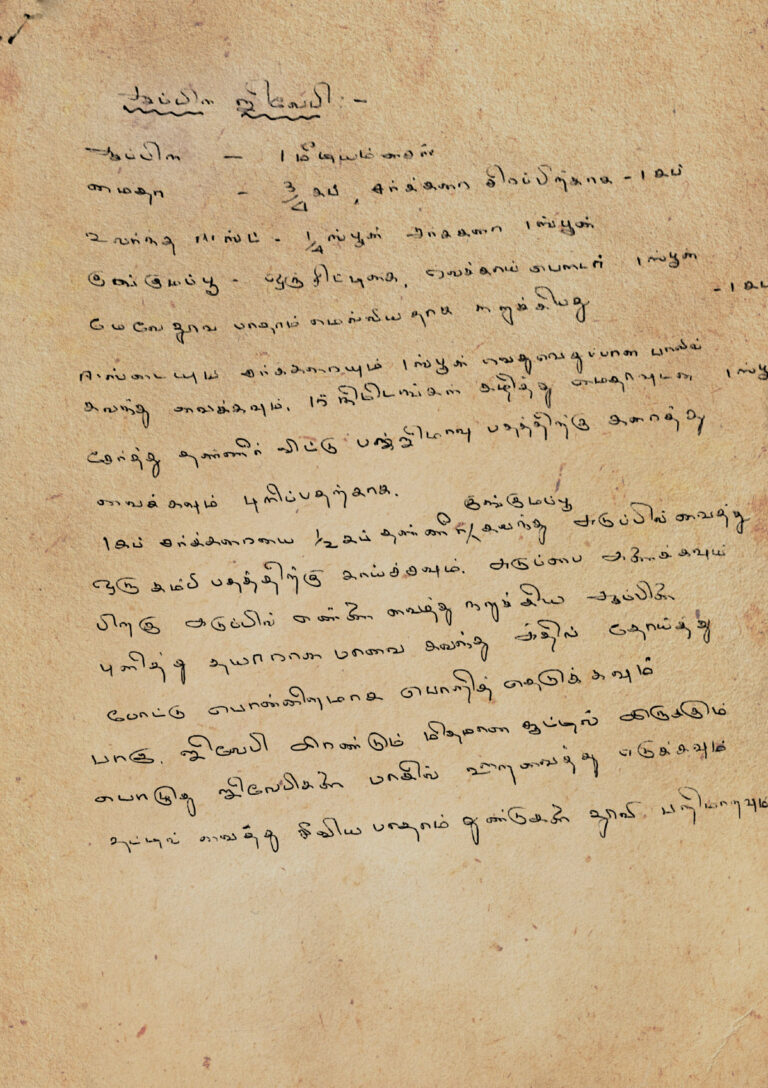
Foodialogues brings to you a cherished compilation of handwritten recipes in Tamil/Tamizh. These recipes written by my mother were a part of my wedding trousseau. These yellowed treasures have been my food preparation guide since 1984. Some are crumbling due to age and use, and this is when I decided to digitise them and give them eternal life as a tribute to this phenomenal 84-year lady, who has been and still is my guiding light. She has now with a lot of gusto set aside her embroidery and crochet and has begun to translate my newer recipes into Tamil so that I can feature them in my blog. I begin with a fruit jelebi …a simple recipe that requires basic skills . This jelebi can be made with fruits like apples, pineapples and pears. It becomes a healthy finger food when its served as fruit fritters without the dip in sugar syrup.
காஞ்சிபுரம் இட்லி
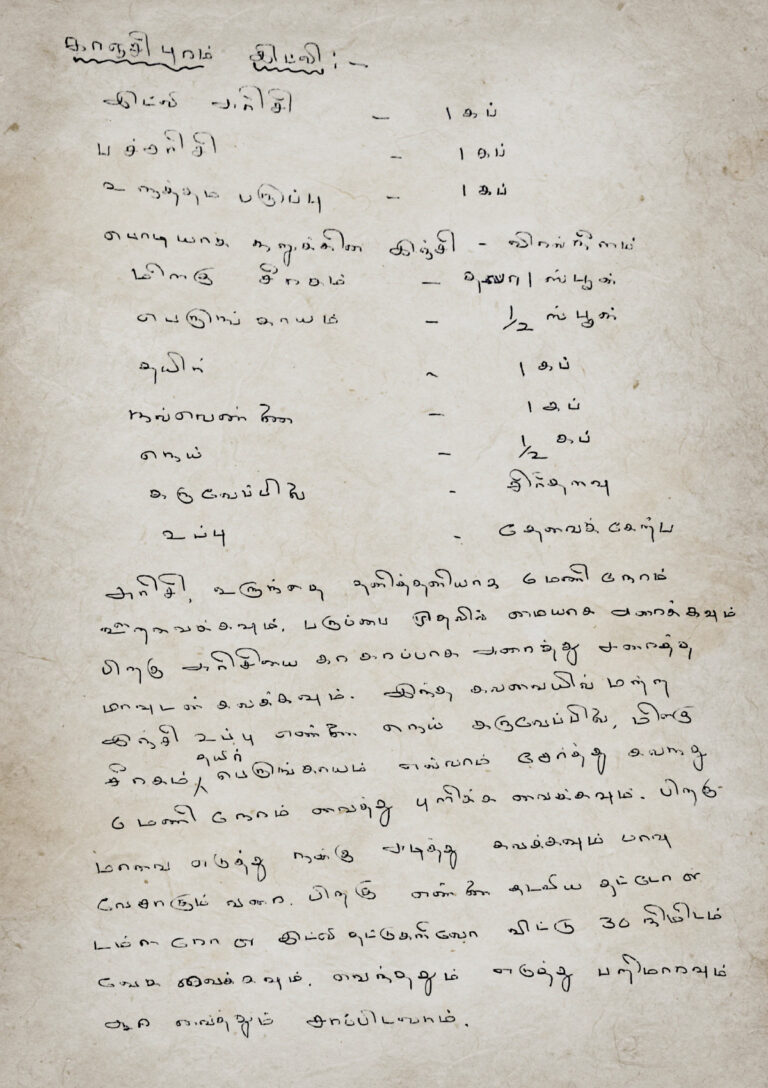
It was 4.30 am and I got up with the ringing of the doorbell. Sleepy eyed I opened the door for my Nepali cook. He came in with his usual beaming “namasthe maaji” but I could sense a kind of an unusual exuberance in him. As he began his cooking, he gave me a wad of notes and asked me to book his flight ticket to Gorakhpur from where he would take a bus or a jeep to his village in Nepal. I gave him a little Gyan on flight fares and preferred dates of travel and after his consensus, the tickets were booked, printed, and given to him. He was highly elated and the second round of tea that he had made for me was flavoured with cardamom without my usual gentle reminder, and the kitchen was extra sparkling. He had also made an extra subji going beyond his usual out time of 6.00 am. Freebies that I had got for booking his ticket and orienting him for his maiden travel by airplane.
I sat with my cup of tea and began reminiscing about my childhood train travels. Aircrafts were what we saw flying high in the skies. It was trains that were our frequent mode of travel. It was usually an overnight travel to or from Madras to the city or town where my father, an Airforce officer was posted. Train travel was fun. All of us looked forward to it. The storybooks would be borrowed from the library or bought from famous old book joints on the pavements, board games decided upon, and the most exciting part … Food… planned, prepared with care, and packed into huge handwoven baskets. Weaving these which were a part of my mother’s leisure activity. Tea and hot water flasks, Water cans, old newspapers, cloth napkins, steel plates, and tumblers would all be placed in the food basket. Namakpara, murukku, sandwiches, chips, Cake slices….all homemade would be there. Enid Blyton books were our inspiration for the travel basket menu and my mother would try to match it as close as possible.
Come dinner time it was the fragrant Kanchipuram Idly. Paired with Mulagaipodi and sesame oil and packed in manthara elai a kind of hand-stitched leaves, the idly parcels would be opened with all delight. The leaves would have imparted the already delicious Idlies with a leafy fragrance which would further enhance the taste of these speciality. My mother would pour the Idly batter in round aluminium cake moulds, tumblers, and small cups, and hence the squares, discs, and cones of idlies would entice us even more. The bits of ginger, curry leaves combined with pepper, cumin and asafoetida were the flavourings, and the sesame oil and curd would result in super soft Kovil Idly as its also commonly known as.
Foodialogues features Kanchipuram Idly ….the recipe given to me 38 years back which I follow even today for the perfect spongy delicacy. My blog also features the recipe in English and a video on YouTube that has been embedded in my blog for details.
தஞ்சாவூர் அடை
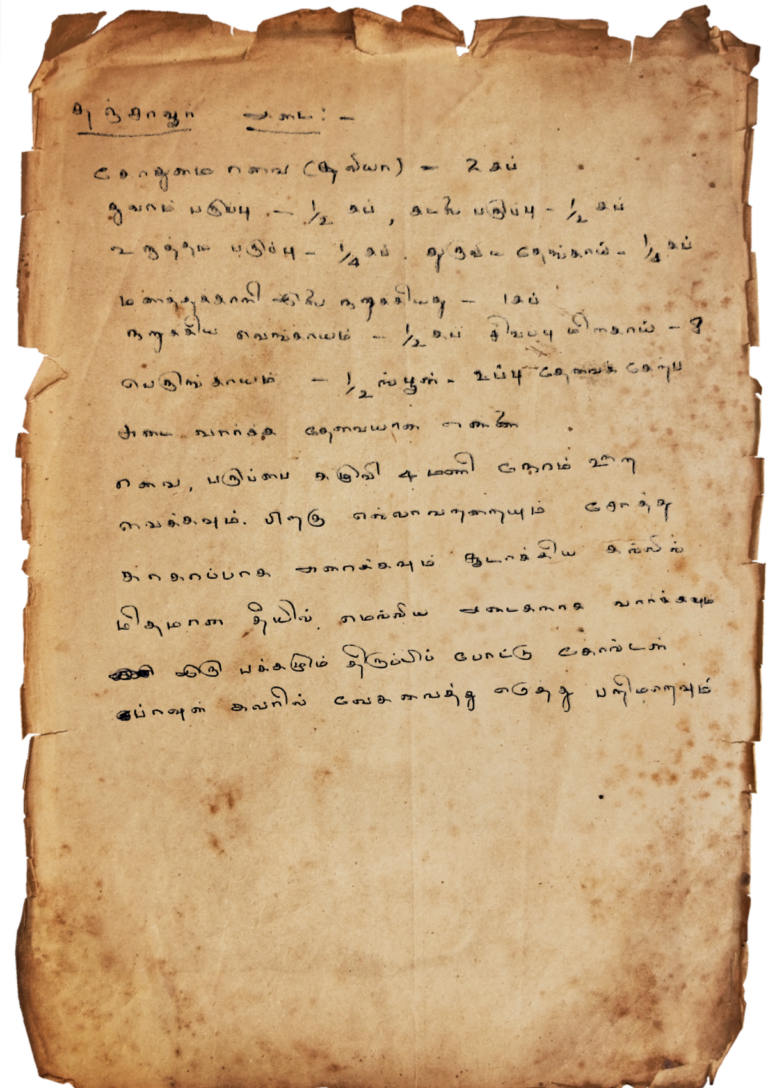
The Thanjavur Brahmin Cuisine is a predominant one that features in several homes of the tambrahm community. Several delicious feasts have sprung from this land of Cholas with a predominant Maratha influence. The preparation of Sambhar, poricha rasam , daangar pachadi,paavakai pitlai,kathrikai rasavangi ,use of coconuts, red chilly, and many more has its origins here. Idly was not very popular but thick dosas called “kal dosai” and adai varieties were popular ‘tiffen ‘ items. All are ‘no onion -garlic’ recipes and references to drumstick, bottle gourd,radish, and carrots were rare. My father hailed from a small village called ‘Thitai” in Thanjavur, but it’s a place that none of us have ever visited. Yet the Thanjavur tag in all our traditional and cultural practices still exists. Married into a family with the same cultural lineage the Thanjavur style in food preparation continues.
Adai is a popular tiffen in our home . it’s a wonderful combination of rice and mixed pulses spiced with red chillies. Visually like dosa this dish is pan-fried to crisp golden brown and relished with ghee and jaggery, morekuzhambu, avial, and onion chutney. Foodialogues brings to you an Adai recipe with a twist that was popular in my maternal home, where the rice was substituted with broken wheat. A treat not just to the taste buds but to our health too.
ராகி அல்வா

Fighting Malnutrition with Millets-A success story-An article in TOI today was an interesting read. The article enumerates the success story of 2 two Indian states on the millet revival and its introduction as a “take-home ration” under the supplementary nutrition program. What is perplexing is that ancient India had been home to several millet varieties. They were just apt for our dryland agriculture. Gluten-free and anti-allergenic, these nutrition storehouses were a component of our traditional daily diets. However, the Green Revolution and the biased favors for white rice and wheat staples saw the slow and painful exit of these super grains from our healthy diets. This unscrupulous replacement of these cost-effective and environmentally sustainable grains definitely had a toll on the nutritional status of the marginalized
in India. Now with the revival spree, these grains have been given the status of super grains and are being much sought after to the extent that anything and everything that’s healthy has a millet label. The
cost of these grains is also at par with that of rice and wheat.
Despite being rice eaters, it has been customary in my family to start the process of “Weaning” with millet porridge more so that of ragi. Ragi grains would be prepared, sprouted, and milled into fine flour which would be gelatinized to a pale pink smooth gel. This would be sweetened with jaggery and spoon-fed to the baby. The growing years would see the children eating Ragi ladoo and ragi halwa, two interesting and delicious delicacies which would silently take care of their calcium and iron requirements.
Foodialogues brings to you the traditional know-how of a simple ragi halwa. Smooth, glistening, and soft, this sweet treat is any time-high energy snack. The recipe is available both in Tamizh and English
நெய் அப்பம்

Sumukha, Ekadantha, Kapila, Gajanana, Ganesha….. the cute little roly-poly god with the elephant head, inspiring devotion, and love in the hearts of many. He is back again with all gaiety. His huge murthis and decorated pandals are there everywhere. Slowly the festive spirit is gathering momentum A wee bit of introspection into his man-elephant form, is a symbolism that is interesting and intriguing. In the wild, elephants are the path makers and pave the way for their herd. So much so, this elephant-headed god removes all obstacles from our path and helps us to move towards success. His elephant head symbolizes immense wisdom and his long trunk represents aum, the sound symbol of cosmic reality. The huge Pot belly signifies the infinite Universe and the bounty of nature.
On this auspicious occasion of Ganesh Chathurthi/ Ganeshutsav,
மாம்பழம் பால் கொழுக்கட்டை

சேமியா கேசரி
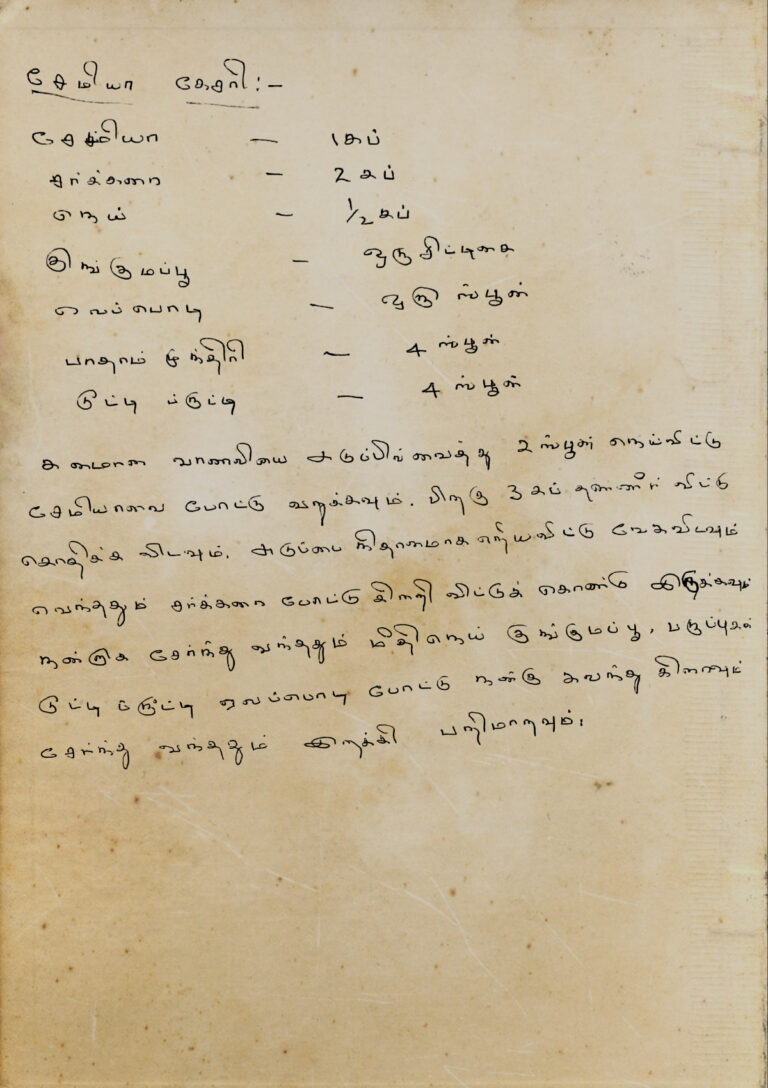
ராகி லட்டு

மாம்பழ கேசரி
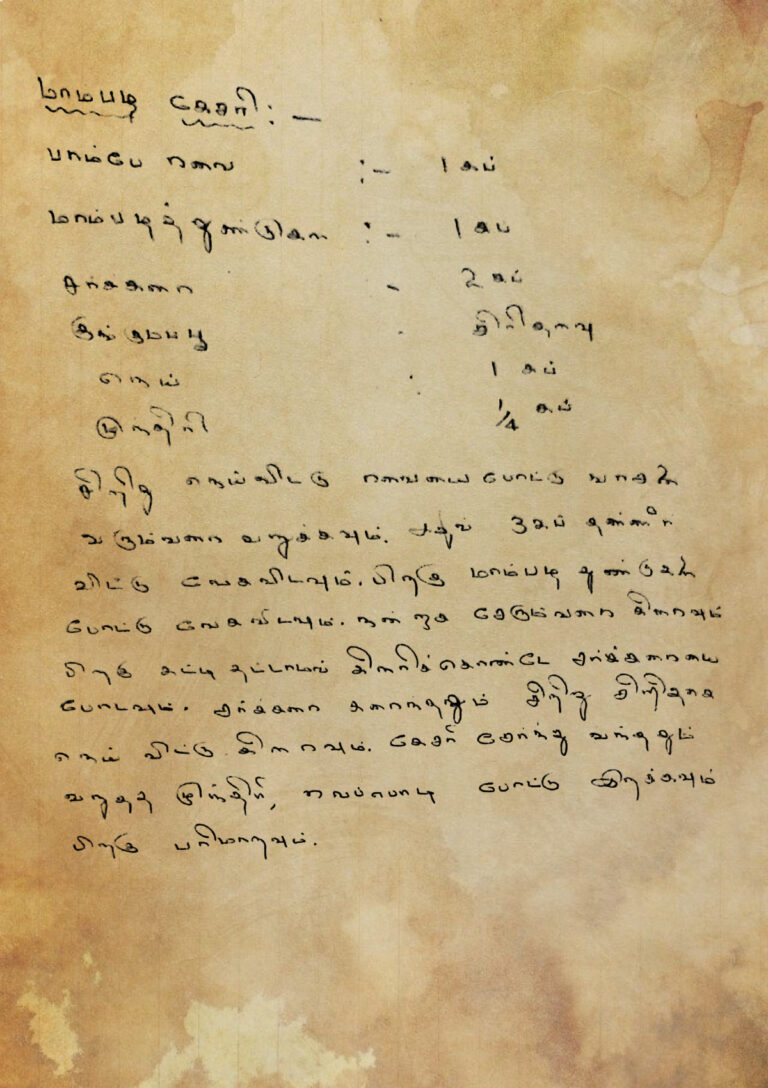
கல்கண்டு சாதம்
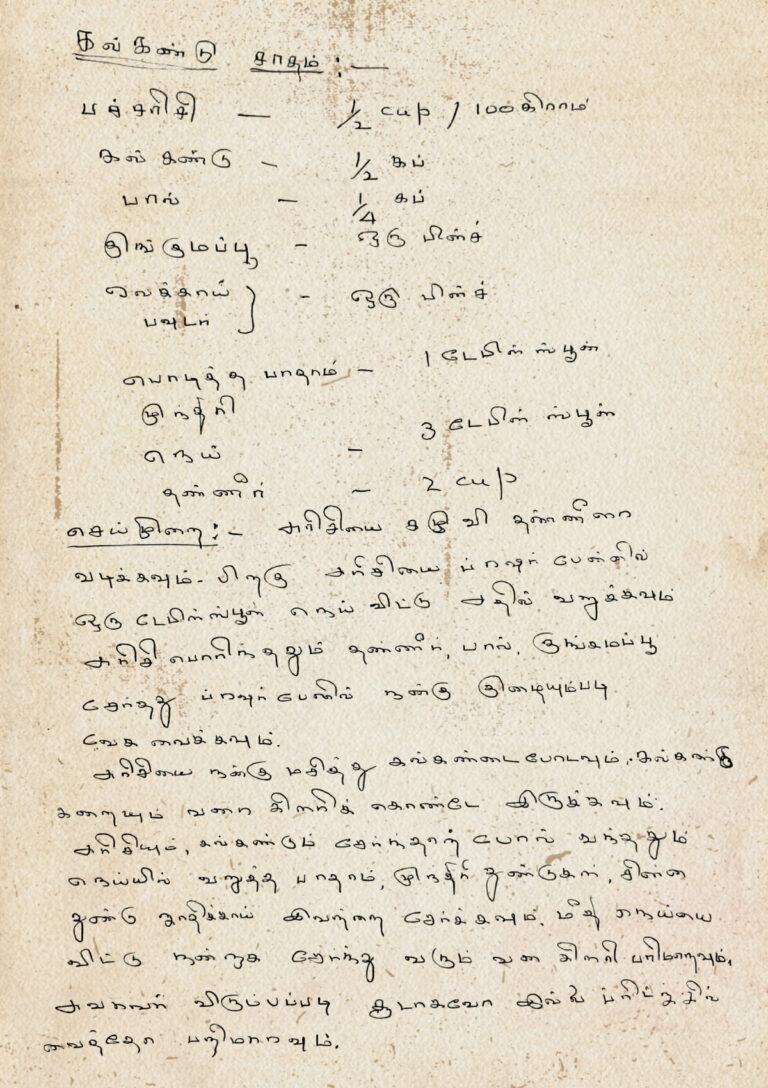
மாம்பழ ஸ்ரீகண்ட்
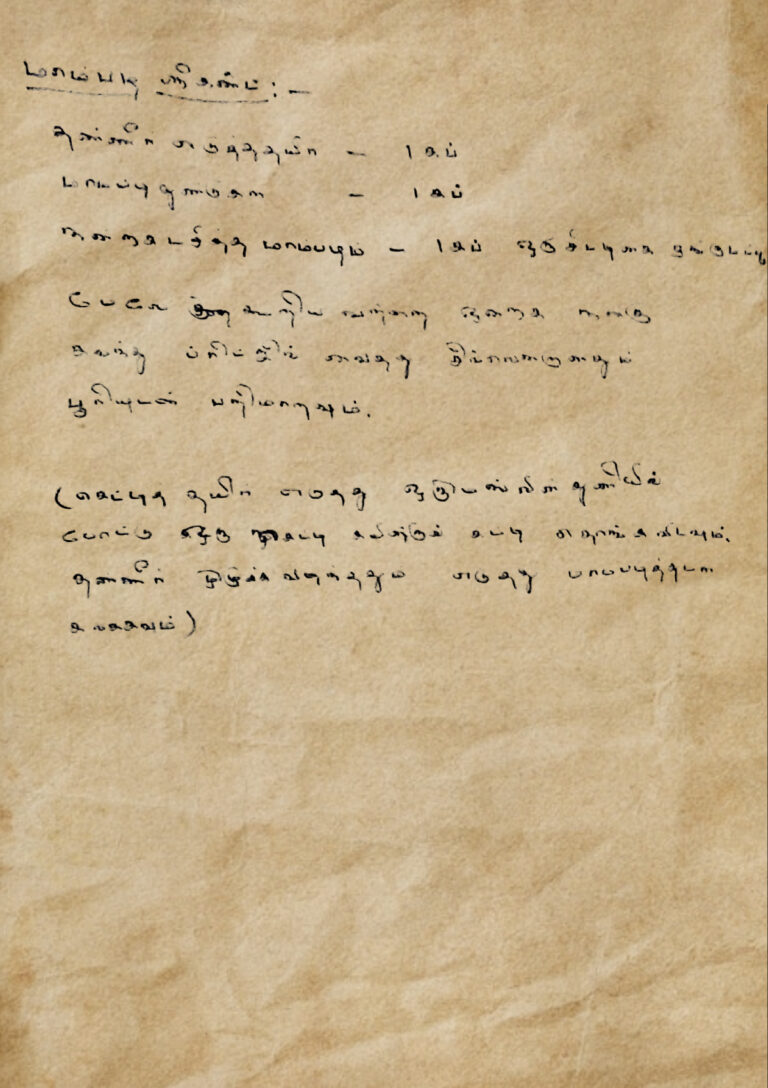
இளநீர் பாயாசம்

